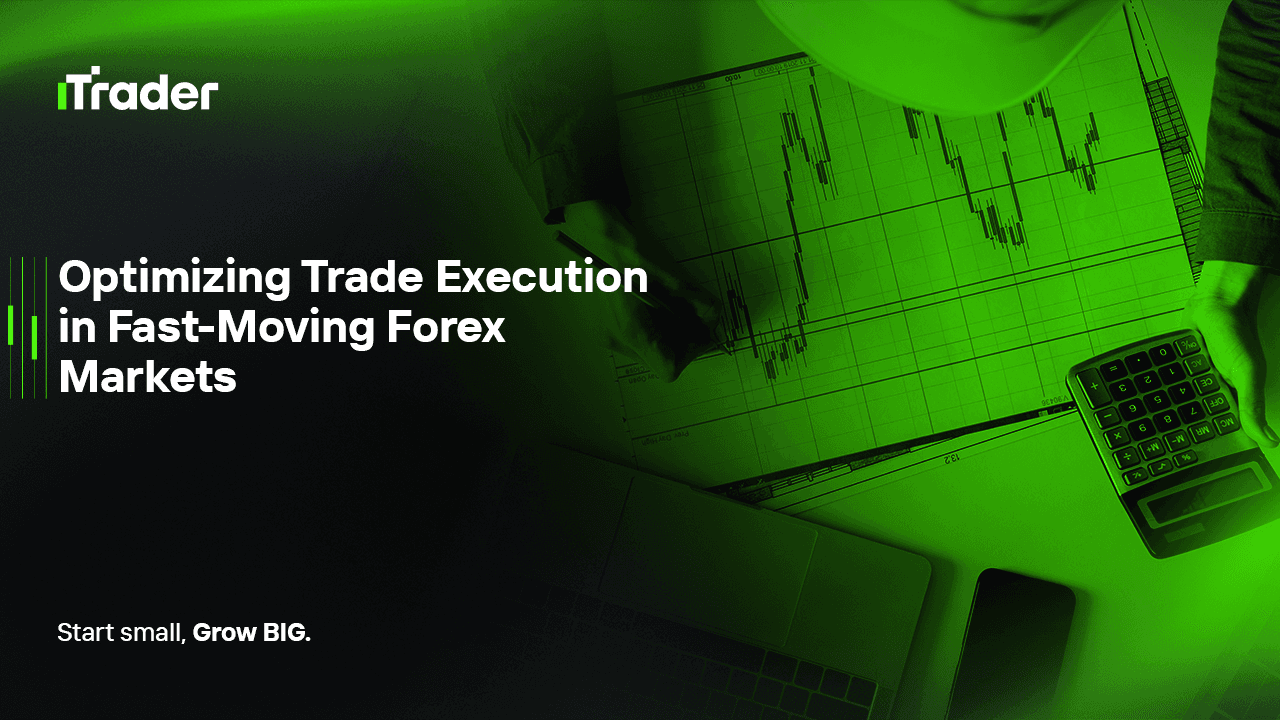2025-07-28
In algorithm-dominated financial world, speed is a strategic edge. But speed alone is not enough. Especially in fast-moving market environments, prop traders face intensified risks such as slippage, delayed execution, emotional overtrading, and microstructural traps. Without optimization, even well-researched strategies fail under sudden volatility. This article provides actionable frameworks for prop traders to optimize their execution and risk performance during fast-paced market conditions.

AI Summary
Fast-moving markets expose traders to execution delays, slippage, and rapid volatility changes that can erode performance. For prop traders, optimizing trading systems for latency, using pre-execution logic, dynamic risk adjustment, and modular trade management is essential. This article outlines how to remain efficient, composed, and strategically adaptive in high-velocity market conditions, especially during economic news, low-liquidity events, or regime shifts.
A fast-moving market is defined by:
These environments often occur around:
For a prop trader, adapting to these changes means creating a system that detects, reacts, and executes with precision.
Latency is the time between trade decision and execution. In a slow market, minor latency is tolerable. But in high-speed markets:
Solutions:
Execution technology is not just for HFT firms. Even discretionary prop traders benefit from latency-optimized systems when markets turn chaotic.
Most traders either avoid or gamble during high-impact news. Prop traders should take a protocolized approach:
This approach preserves capital while still allowing exposure to potential high-R profits.
During volatile spikes, fixed position sizing becomes inefficient. A 1% risk trade during a quiet Asian session behaves differently than the same size during a Fed rate release.
Key techniques:
Your system should simulate not just PnL but behavioral stress under fast movement – and respond accordingly.
Markets don’t just move – they accelerate. A strategy should manage trade states modularly:
Modularity creates decision buffers and reduces panic exits. For example, if slippage exceeds 3 pips, the monitoring module can exit independently regardless of take-profit level.
This architecture is crucial when news spikes reverse quickly or liquidity dries up.
Fast-moving markets don’t just test systems – they test humans. Typical issues:
Countermeasures:
Top prop traders treat psychological discipline as a risk metric in high-velocity trades.
Knowing when not to trade is often more valuable than complex indicators. Prop traders must learn to filter sessions and setups:
Optimization includes eliminating low expectancy trades, especially in unstable price discovery phases.
Many strategies fail not because they’re bad – but because their execution assumptions don’t hold under fast market regimes.
Checklist for realistic backtesting:
Bridging this gap helps prop traders build “deployment-ready” strategies that survive the chaos, not just simulations.
Speed is seductive—but raw speed without precision causes loss. The real edge for prop traders lies in:
Treat high-speed markets as special environments requiring specialized behavior. By optimizing your execution architecture, risk logic, and human factors, you ensure your edge is preserved even when the market is running at full throttle.
© 2025 iTrader Global Limited | 회사 등록번호: 15962
iTrader Global Limited는 코모로 연방 앙주앙 자치섬의 무잠두(Hamchako, Mutsamudu)에 위치하고 있으며, 코모로 증권위원회(Securities Commission of the Comoros)의 인가 및 규제를 받고 있습니다. 당사의 라이선스 번호는 L15962/ITGL입니다.
iTrader Global Limited는 “iTrader”라는 상호로 운영되며, 외환 거래 활동에 대한 인가를 받았습니다. 회사의 로고, 상표 및 웹사이트는 iTrader Global Limited의 독점 재산입니다.
iTrader Global Limited의 다른 자회사로는 iTrader Global Pty Ltd가 있으며, 이 회사는 호주 회사 등록번호(ACN): 686 857 198을 보유하고 있습니다. 해당 회사는 Opheleo Holdings Pty Ltd의 공식 대리인(AFS 대표 번호: 001315037)이며, Opheleo Holdings Pty Ltd는 호주 금융서비스 라이선스(AFSL 번호: 000224485)를 보유하고 있습니다. 등록 주소는 Level 1, 256 Rundle St, Adelaide, SA 5000입니다.
면책 조항: 이 회사는 본 웹사이트에서 거래되는 금융 상품의 발행인이 아니며 이에 대해 책임을 지지 않습니다.
위험 고지: 차액결제거래(CFD)는 레버리지로 인해 자본 손실이 빠르게 발생할 수 있는 높은 위험을 수반하며, 모든 사용자에게 적합하지 않을 수 있습니다.
펀드, CFD 및 기타 고레버리지 상품의 거래에는 전문적인 지식이 요구됩니다.
연구 결과에 따르면 레버리지 거래자의 84.01%가 손실을 경험하고 있습니다. 거래에 참여하기 전에 관련 위험을 충분히 이해하고 전체 자본을 잃을 준비가 되어 있는지 확인하십시오.
iTrader는 레버리지 거래로 인해 발생하는 손실, 위험 또는 기타 피해에 대해 개인 또는 법인에게 전적인 책임을 지지 않음을 명시합니다.
이용 제한: iTrader는 해당 활동이 법률, 규제 또는 정책에 따라 금지된 국가의 거주자를 대상으로 본 웹사이트나 서비스를 제공하지 않습니다.